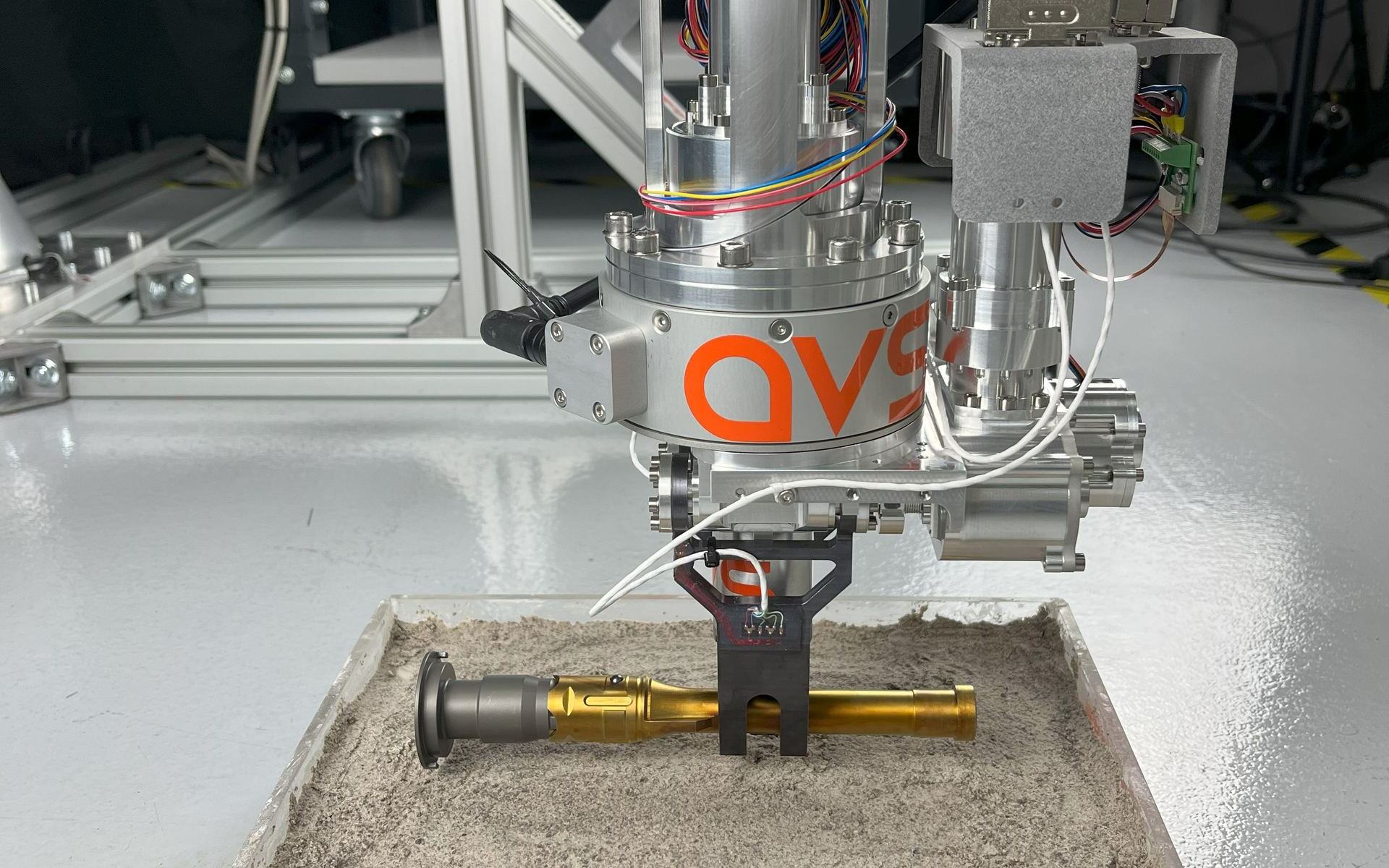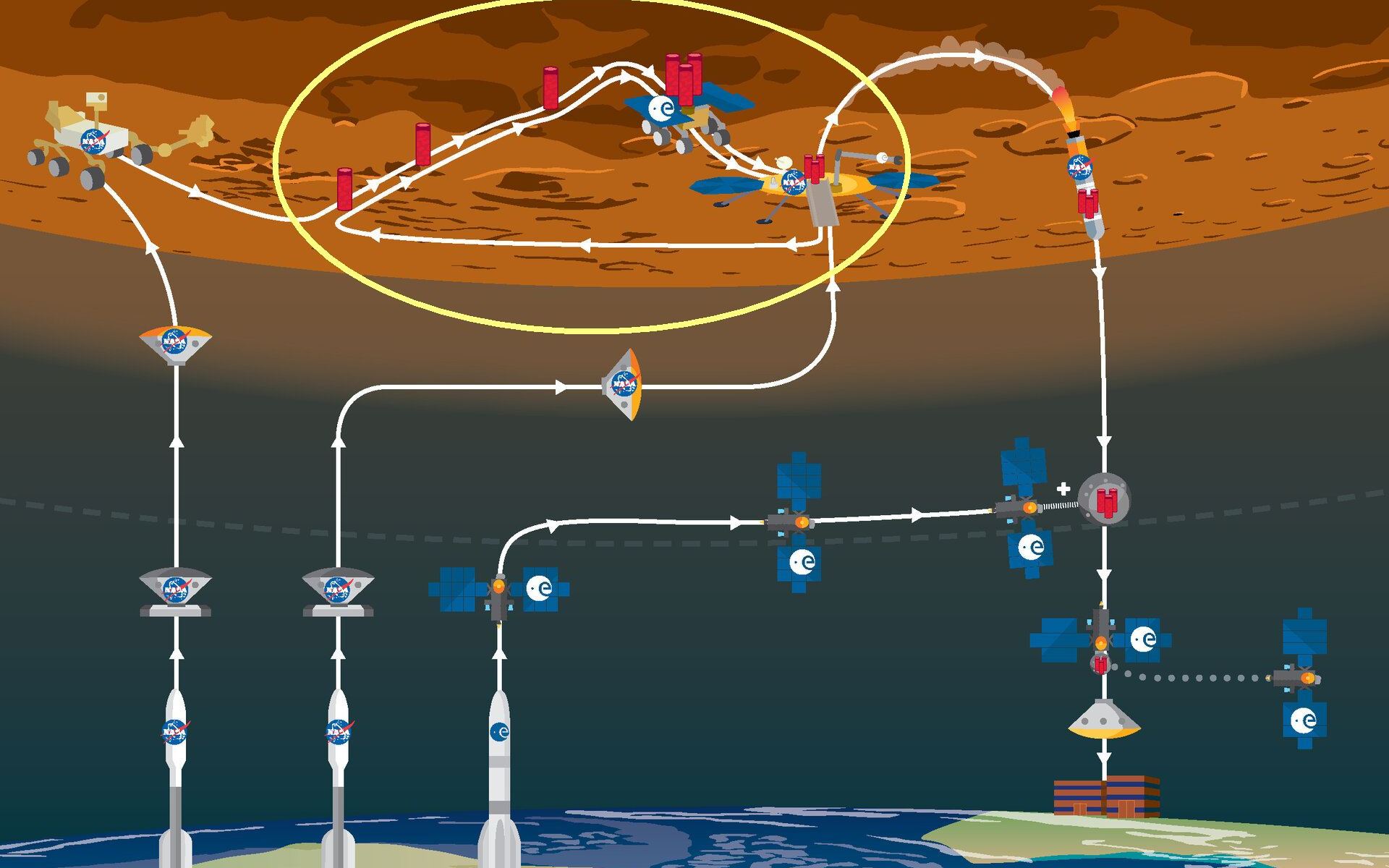Months after deciding that its previous plan for bringing samples back from Mars wasn’t going to work, NASA says it’s working out the details for two new sample return scenarios, with the aim of bringing 30 titanium tubes filled with Martian rocks and soil back to Earth in the 2030s.
One scenario calls for using a beefed-up version of NASA’s sky crane to drop the required hardware onto the Red Planet’s surface, while the other would use heavy-lift commercial capabilities provided by the likes of SpaceX or Blue Origin.
NASA Administrator Bill Nelson said the space agency plans to flesh out the engineering details for each option over the course of the next year and make its choice in 2026. But that all depends on what Congress and President-elect Donald Trump’s administration want to do.
Continue reading “NASA Lays Out Two New Options for Mars Sample Return”








